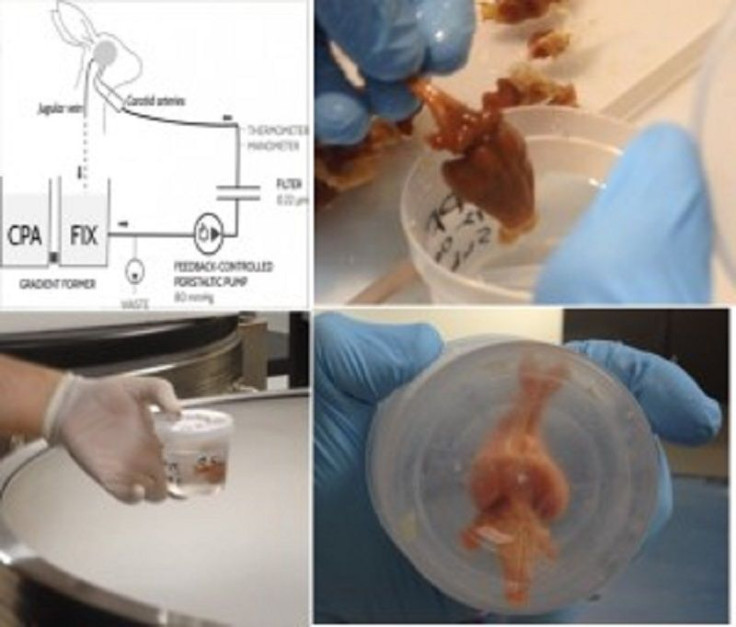Brain Preservation Foundation project thaws without damage rabbit’s brain frozen using cryogenics

The success of cryogenics in freezing the human body and later reviving the person when there is a technology available appears to move closer to reality. The Small Mammal Brain Preservation Prize, a challenge to thaw a brain without damage to its component neurons, was successfully completed after five years.
The prize, won by a team called 21st Century Medicine, involved the storage of a rabbit brain in a deep-frozen state and thawed with no damage, reports Nature World News. To prevent damaging the brain due to ice crystals, which happens when traditional freezing methods are used, the researchers used vitrification. The process uses cryoprotectants to stop neuron damaged during the cooling and thawing stages.
The scientists, led by Robert McIntyre, a recent Massachusetts Institute of Technology graduate, stored the rabbit brain at -211 degrees Fahrenheit. When it was thawed, the brain’s synapses, intracellular structures and cell membranes were all intact.
The Brain Preservation Foundation (BPF) made the challenge to biologists with the hope of developing new ways to treat brain diseases such as Alzheimer’s. The project, published in Cryobiology journal, has further implications in preserving human brains in the future.
Cryogenics is a vital component of the head transplant surgery planned by Italian surgeon Sergio Canavero on a Russian man with Werdnig-Hoffman condition. Although skeptics doubt if Canavero would succeed at this point, the success of the Small Mammal Brain Preservation Prize hopes to be replicated in the Large Mammal Brain Preservation Prize that would experiment with pig’s brain.
The next logical step, after success in using the technique on pigs, is to use it on humans. The technology could be tried on people who face imminent death, such as the Russian man willing to give Canavero the benefit of the doubt.
According to TechTimes, the same research team has submitted an entry to the Large Mammal Brain Preservation Prize. Their entry is under analysis. The winner would receive a prize of $26,735 (AUD$37,602). Another team is imaging the entire brain of a mouse with the use of an electron microscope to better understand how neurons connect together in the brain to process memory, thoughts and senses.
Commenting on the success of the rabbit brain project, BPF President Kenneth Hayworth says in a statement, “Every neuron and synapse looks beautifully preserved across the entire brain. Hayworth finds it amazing that the brain he held on his hand was the same organ vitrified glassy solid.





















